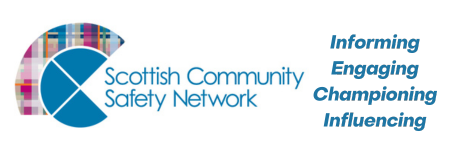
POVERTY AND COMMUNITY SAFETY
How do we achieve community safety? To my mind the best way of achieving that aim is by preventing issues from arising rather than dealing with the aftermath.
When I was a young police officer, a new recruit, the first thing we learned was the legal definition of a constable as defined by law in the Police (Scotland) Act of 1967. You learned it off by heart….’Guard, patrol and watch to prevent the commission of offences, to preserve order and to protect life and property’. The emphasis was most assuredly upon prevention.
Prevention rather suppression was also one of the key principles drafted by Sir Robert Peel when he designed the Metropolitan Police, the first police service (many say it was the second after the City of Glasgow Police, but that’s another story).
Somewhere along the road, however, how we respond to crime became paramount and the desire to prevent it occurring in the first place became much less of a priority. To my mind, there are many reasons for this. Amongst these is the need to ensure value for money – it is much easier to measure a number of crimes committed and the detection rates for solving these than the number of crimes prevented. Moreover, the constant level of demand leaves little room for ‘proactive policing’ or the dedication of valuable resource towards preventative measures.
Despite this, I firmly believe that the desire to prevent crime from occurring in the first place is surely the more important. A society with fewer crimes would have fewer victims, a reduction in the level of fear amongst its citizens and would be able to spend more money on the provision of hope and opportunity than on punishment and deterrence. So, how could that be achieved?
Going back to my experience as young police officer, we did try to prevent crime by patrolling areas both on foot and by car in the hope of deterring people from committing offences. We even had ‘crime prevention officers’ who specialised in providing security advice – what kind of lock to fit or what type of alarm system might best be deployed to protect premises. Unfortunately, these approaches concentrated on an understanding that crime would be committed in any event but that steps could be taken to prevent individuals from becoming the victims.
True prevention means much more than this.
Scotland had long been troubled by the issue of violence and the traditional response was police driven, increased enforcement once the situation had become a crisis. In reality, a strategy of suppression dealing with the manner in which violence presented itself rather than the causes.
The introduction of the ‘Violence Reduction Unit’ in 2005 showed a willingness to look at this problem in a different way. By adopting a ‘public health model’, the VRU began to look at the causes of violence and take a more preventative approach.
This need for prevention is also true in relation to issues other than criminality. Let’s examine for a moment Scotland’s recent history of drug deaths. This is another problem that we have contended with for years, as we have with violence. Currently the debate is about safe consumption facilities, clean needles and rehabilitation. All are doubtlessly important as we address this problem. But the question I ask is why do people become addicted to drugs in the first place? What do we do to prevent that? These were questions asked about violence in 2005 and they are equally valid questions to be asked today in respect of drug addiction. You can even add to that other problems such as alcohol or gambling addiction.
Indeed, if we were to examine any of the serious issues we contend with a society in 2021 we will find that the people who live in our poorer areas, the areas we class as our communities of ‘multiple depravation’, have the worst outcomes. We have covered violence, alcohol, drugs and gambling but to these we can also add health and educational outcomes, the list goes on.
These statistics underline the fact that poverty and inequality are uppermost amongst the major causes of the problems we currently face, if not the key driver. Despite this, I believe that we tend to look at limiting the damage caused or suppressing the problem rather than taking preventative measures to deal with the issues at their root.
There is an urgent need for greater investment in our poorer communities and a willingness to lift people out of poverty. The provision of hope and aspiration to the next generation is likely to deliver far fewer addicts, better health and educational outcomes and a further reduction in violence.
We need to start that conversation. It will deliver safer communites.
